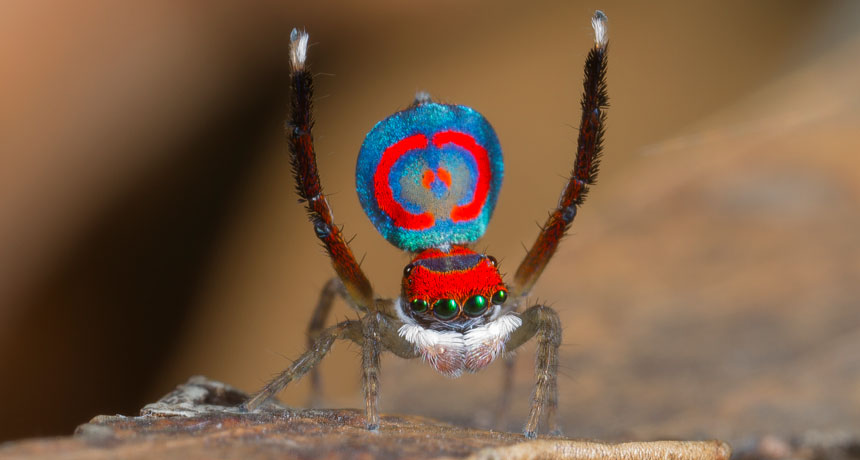Tiny structures give a peacock spider its radiant rump

Male peacock spiders know how to work their angles and find their light.
The arachnids, native to Australia, raise their derriere — or, more accurately, a flap on their hind end — skyward and shake it to attract females. Hairlike scales cover their bodies and produce the vibrant colorations that make peacock spiders so striking.
Doekele Stavenga of the University of Groningen in the Netherlands and his colleagues collected Maratus splendens peacock spiders from a park outside Sydney and zoomed in on those scales.
Using microscopy, spectrometry and other techniques, the team found that the spiders’ red, yellow and cream scales rely on two pigments, 3-OH-kynurenine and xanthommatin, to reflect their colors. Even white scales contain low levels of pigment. Spines lining these scales scatter light randomly, giving them slightly different hues from different angles.
Blue scales are an entirely different story. They’re transparent and pigment-free. Instead, the scales’ architecture reflects iridescent blue and purple hues. Each peapodlike scale is lined with tiny ridges on the outside and a layer of threadlike fibers on the inside. Fiber spacing may determine whether scales appear more blue or more purple.
Whether peacock spiders’ eyes can actually see these posterior patterns is an open question, Stavenga and his colleagues write in the August Journal of the Royal Society Interface. Given that other jumping spiders see at least three color ranges, it seems unlikely that such vivid come-hither choreography plays out in black and white.